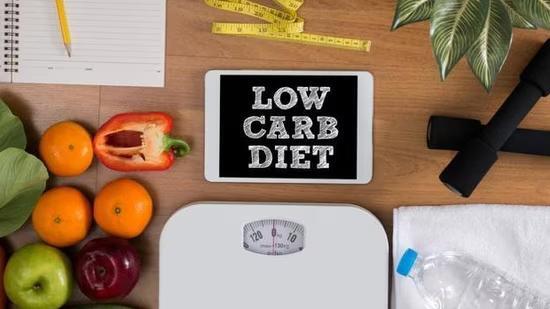
Study Reveals How to Eat Low-Carb Diet the Right Way
In recent years, low-carb diets have gained immense popularity among health enthusiasts and fitness enthusiasts alike. While some people swear by the benefits of a low-carb diet, others are skeptical about its effects on overall health. A new study published in Frontiers in Nutrition has shed light on the best way to eat a low-carb diet, providing three seven-day meal plans that contain low levels of carbohydrates while exceeding recommendations for essential nutrients.
The study, which was conducted by a team of researchers from the University of California, San Francisco, aimed to develop meal plans that could help individuals with type 2 diabetes and obesity, who often struggle to meet their nutritional needs while following a low-carb diet. The researchers designed three different meal plans, each with a different daily carbohydrate intake: 20, 40, and 100 grams.
One of the primary concerns about low-carb diets is that they may lack essential nutrients, including vitamins A, C, D, and B-complex. However, the study found that the meal plans not only met but exceeded the recommended daily intake of these essential vitamins. The researchers also discovered that the plans provided sufficient fiber intake, which is often a concern for low-carb dieters.
So, what does a low-carb meal plan look like? According to the study, it’s possible to eat a low-carb diet that is both nutritious and delicious. Here are some examples of the types of foods that were included in the meal plans:
- Vegetables: Dark leafy greens, broccoli, cauliflower, and other non-starchy vegetables were included in all three meal plans.
- Protein sources: Lean meats, fish, eggs, and dairy products were included as protein sources.
- Healthy fats: Avocado, nuts, and olive oil were used as healthy fat sources.
- Low-carb fruits: Berries, citrus fruits, and avocados were included as low-carb fruits.
The researchers also emphasized the importance of portion control and meal frequency. They recommended eating five to six meals per day, with each meal consisting of a balance of protein, healthy fats, and vegetables.
Here’s an example of what a daily meal plan might look like:
20 grams of carbs/day
- Breakfast: Scrambled eggs with spinach and avocado
- Snack: Greek yogurt with berries and walnuts
- Lunch: Grilled chicken breast with roasted broccoli and a side salad
- Snack: Hard-boiled egg and a handful of almonds
- Dinner: Grilled salmon with zucchini noodles and a side of olives
- Snack (optional): Cottage cheese with cucumber slices
40 grams of carbs/day
- Breakfast: Overnight oats with almond milk and berries
- Snack: Apple slices with almond butter
- Lunch: Turkey and avocado wrap with mixed greens
- Snack: Carrot sticks with hummus
- Dinner: Grilled chicken breast with roasted sweet potatoes and a side salad
- Snack (optional): Greek yogurt with honey and almonds
100 grams of carbs/day
- Breakfast: Whole-grain toast with scrambled eggs and avocado
- Snack: Banana with peanut butter
- Lunch: Grilled chicken Caesar salad
- Snack: Whole-grain crackers with cheddar cheese and grapes
- Dinner: Baked salmon with roasted asparagus and quinoa
- Snack (optional): Cottage cheese with sliced cucumber
While the study provides a promising approach to a low-carb diet, it’s essential to note that everyone’s nutritional needs are different. It’s crucial to consult with a healthcare professional or registered dietitian before making any significant changes to your diet.
In conclusion, the study reveals that it’s possible to eat a low-carb diet that is both nutritious and delicious. By including a balance of protein, healthy fats, and vegetables, and by paying attention to portion control and meal frequency, individuals can meet their nutritional needs while following a low-carb diet. The three meal plans outlined in the study provide a starting point for individuals who are looking to incorporate a low-carb diet into their lifestyle.






